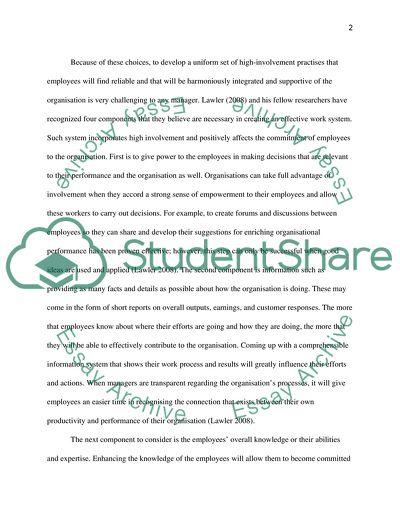Cite this document
(High Involvement Work Practices Case Study Example | Topics and Well Written Essays - 2750 words, n.d.)
High Involvement Work Practices Case Study Example | Topics and Well Written Essays - 2750 words. Retrieved from https://studentshare.org/human-resources/1733715-high-involvement-work-practiceshiwp-explain-and-put-in-practice-with-case-studies
High Involvement Work Practices Case Study Example | Topics and Well Written Essays - 2750 words. Retrieved from https://studentshare.org/human-resources/1733715-high-involvement-work-practiceshiwp-explain-and-put-in-practice-with-case-studies
(High Involvement Work Practices Case Study Example | Topics and Well Written Essays - 2750 Words)
High Involvement Work Practices Case Study Example | Topics and Well Written Essays - 2750 Words. https://studentshare.org/human-resources/1733715-high-involvement-work-practiceshiwp-explain-and-put-in-practice-with-case-studies.
High Involvement Work Practices Case Study Example | Topics and Well Written Essays - 2750 Words. https://studentshare.org/human-resources/1733715-high-involvement-work-practiceshiwp-explain-and-put-in-practice-with-case-studies.
“High Involvement Work Practices Case Study Example | Topics and Well Written Essays - 2750 Words”, n.d. https://studentshare.org/human-resources/1733715-high-involvement-work-practiceshiwp-explain-and-put-in-practice-with-case-studies.


